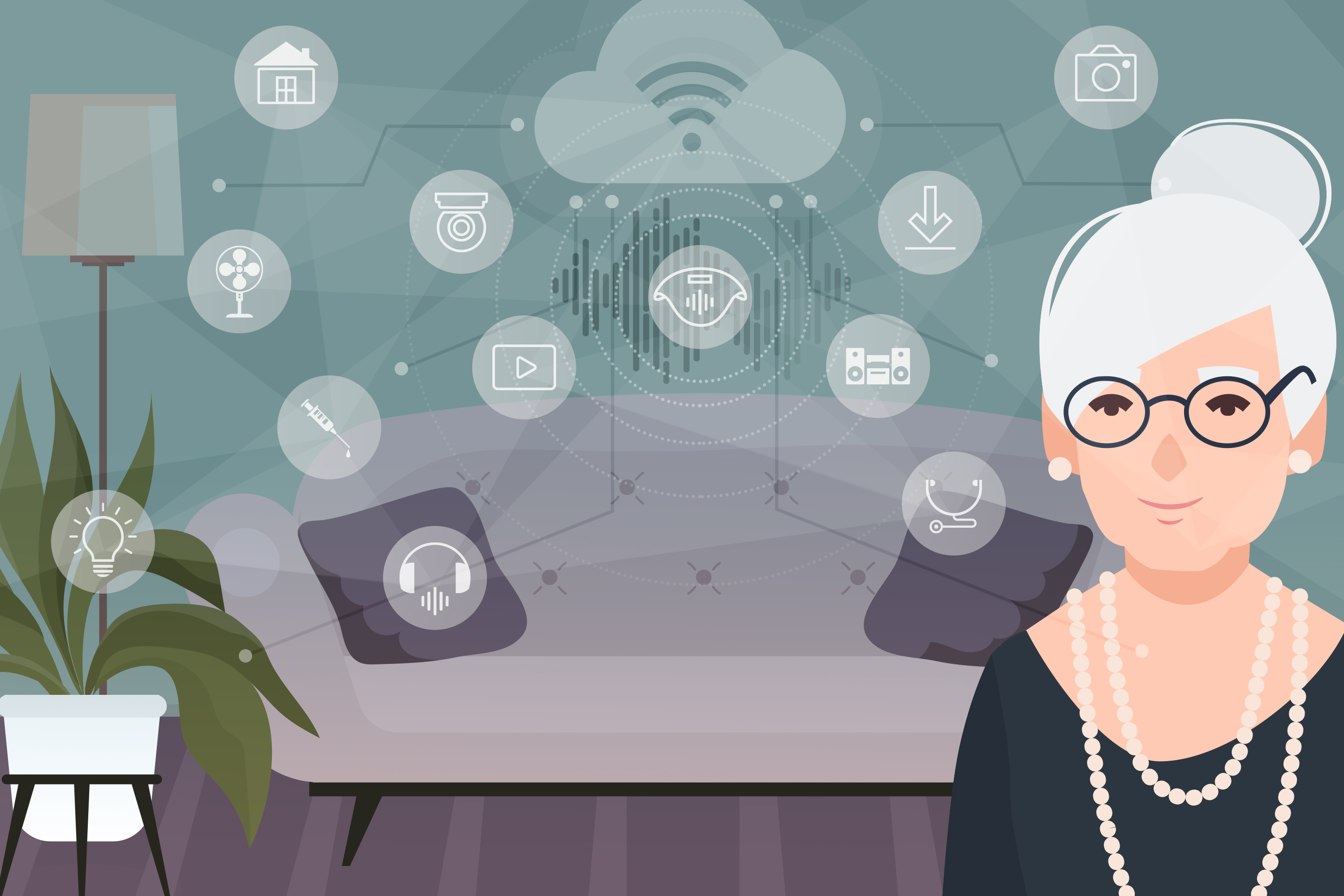IoT-based assistant systems to help the elderly
Getting to spend your latter years in your own home is something most people hope to do. Yet sometimes that can be difficult -- ultimately, no one else is there in case of an emergency. The “Internet of things”, typically known for its use in manufacturing and logistics, can utilize its strengths in this domain as well by assisting the elderly and allowing them to live in their own homes for as long as possible. How well it works has been demonstrated by the EU project “ACTIVAGE”, in which Fraunhofer IGD was involved.

Connecting things to one another and to the virtual world through information and communications technology is the goal of the “Internet of things”, or IoT. The Internet of things refers to technology with which physical and virtual objects -- “things” -- can be connected to one another. With an IoT infrastructure, more and more things can communicate with one another wirelessly and automatically perform tasks; humans no longer need necessarily intervene. So far, the utility of IoT was primarily reserved for manufacturing and logistics issues, however IoT can play a key role in another challenge that Europe will be facing in the coming decades: an aging population.
“ACTIVAGE”: the EU’s largest IoT pilot project for senior-friendly living environments
What IoT can mean for the field of ambient assisted has been demonstrated by the EU project “ACTIVAGE”: a 45-month pilot program that ended in October 2020 and involved 12 regions in 9 countries, making it the largest European IoT pilot project on the topic of smart living environments. For Germany, the Fraunhofer Institute for Computer Graphics Research IGD brought in its expertise. “’ACTIVAGE’ shows that technology can not only make an affordable contribution to prolonging independent living for the elderly but also optimize social services and ease the burden on the nursing care system,” said Mohammad-Reza Tazari of Fraunhofer IGD, who sat on the project management committee. “’ACTIVAGE’ systems use sensors and IoT devices to collect data and interpret it, improving the independence, freedom, health, and safety of their users.”
Each of the pilot programs in the individual countries and regions had a different goal. In Germany, the question was how to utilize sensors and actuators in a domestic setting and then how to use the data to ascertain the situation in the home? “While SmartHome focused on control and information -- such as adjusting the lighting or a user interface for optimizing power consumption -- we take it one step further here and use the data to step in and assist,” explained Tazari. In Germany, the Fraunhofer research team was responsible for setting up assistance systems in 102 homes and 71 nursing home rooms. In all, over 4,250 devices were used, generated an average of over 86,000 messages every month -- and that is per dwelling! Messages included movement by the person, door contact, bed use, and even water consumption. In order to process all the signals automatically, the researchers at Fraunhofer IGD already had head start with their platform “universAAL IoT”. Using this as a basis, they developed the assistance system “uLive”, which was used in the homes and has since reached the stage where it is ready for production.
The bottom line of “ACTIVAGE” is that IoT is ideal for easily and flexibly connecting different devices to one another, detecting the situation in the dwelling, and then arranging for special responses.
 Fraunhofer Institute for Computer Graphics Research IGD
Fraunhofer Institute for Computer Graphics Research IGD